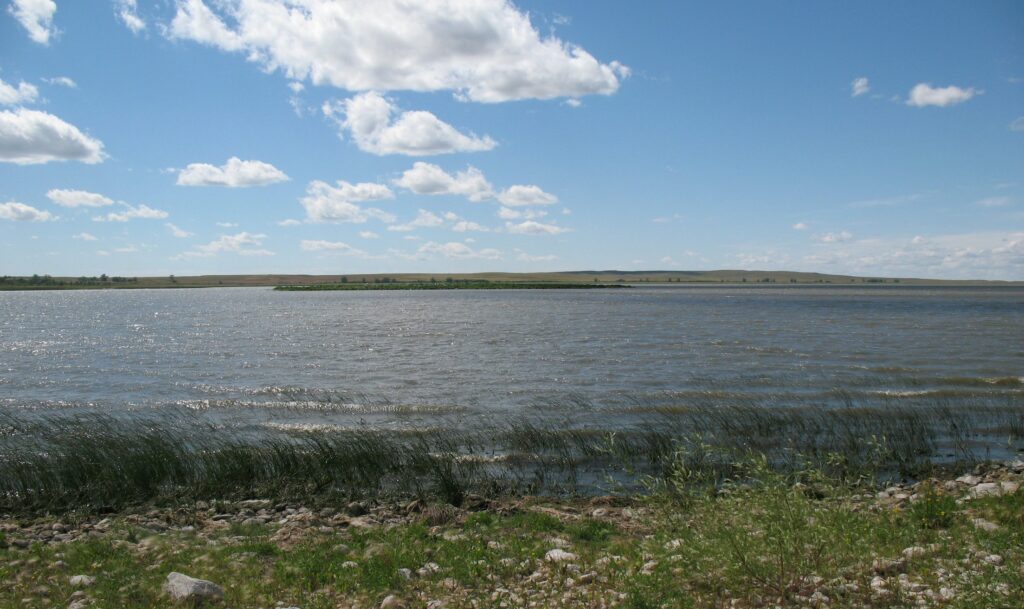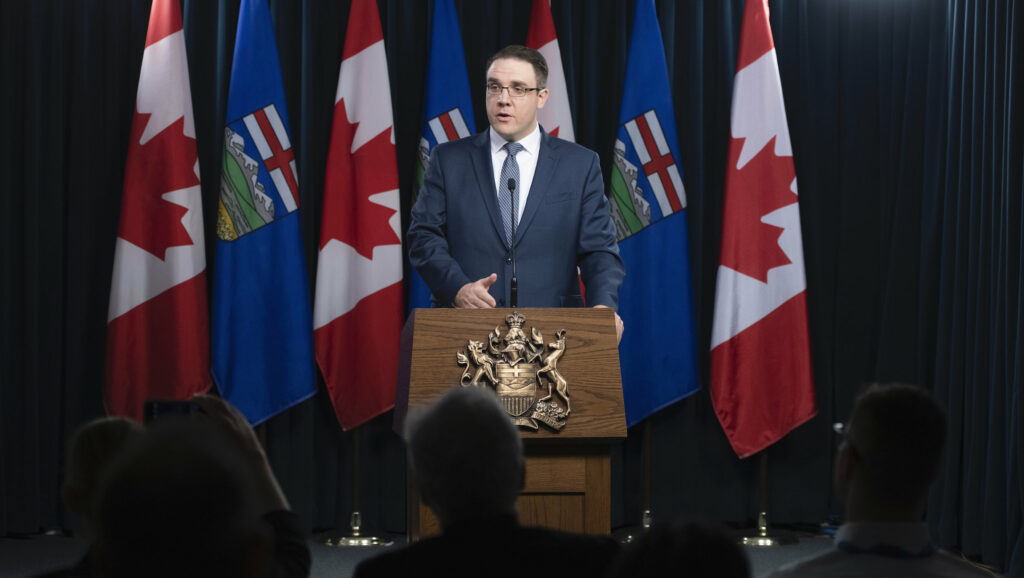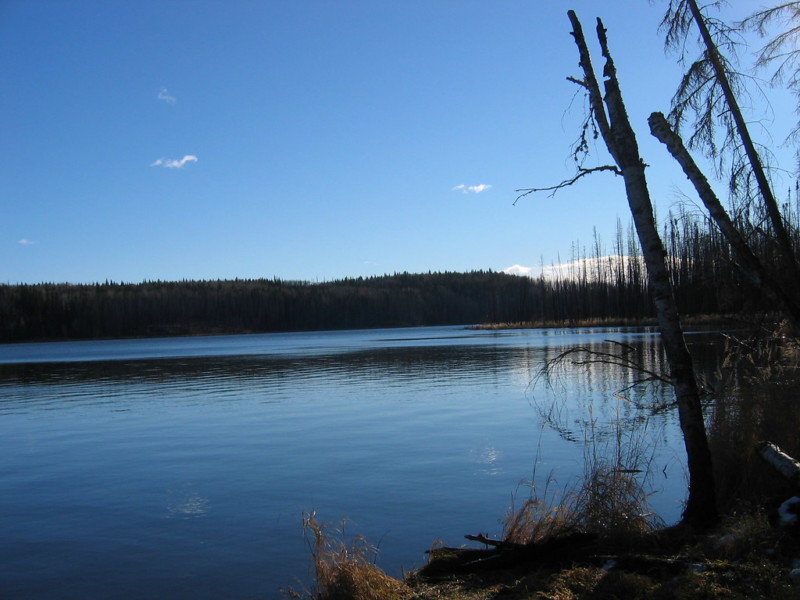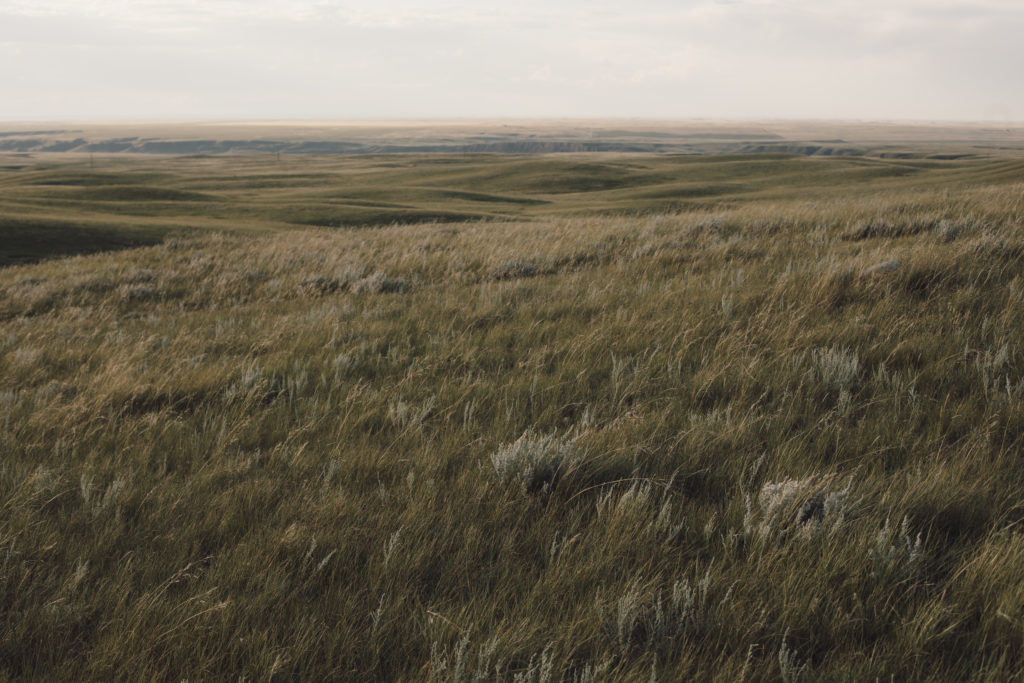
Shad: ‘Nature isn’t just a pastime, it’s a practical and spiritual need’
As he celebrates 20 years making music, the beloved rapper shares what he’s learned about...
After months of confusion — and consternation — over a plan to remove dozens of sites from the Alberta Parks system, Jason Kenney’s United Conservative Party government now says all 170 sites will remain protected and open to the public.
The province announced Dec. 22 that the sites would be operated through new or existing partnerships with Indigenous groups, non-profits, municipalities or other partners.
“I am grateful for the hard work of our parks partners and look forward to keeping our parks system sustainable for future generations,” Environment and Parks Minister Jason Nixon said in a statement.
Katie Morrison, the conservation director for the southern Alberta chapter of the Canadian Parks and Wilderness Society (CPAWS), called it a “huge win” that these sites will retain their existing level of protection.
“That really is a credit to all the thousands and thousands of Albertans, who have been fighting to have their voices heard on the issue…and really putting pressure on the government to reverse this plan,” she said.
But CPAWS still has questions about who the government is partnering with at each site and what exactly those agreements will entail.
According to a government press release, the partnership model has been used in Alberta since 1932 and some of the 170 parks and recreation sites in question have been operated by partners for years. The Buffalo Lake Metis Settlement, for instance, has operated the North Buck Lake Provincial Recreation Area for more than two decades.
Cross-country ski association Nordiq Alberta, meanwhile, has taken over trail grooming in Peter Lougheed Provincial Park and other recreation areas through a new agreement signed this year.
Most of the organizations the government plans to partner with, however, weren’t included in the recent announcement, which just said more partnerships would be “rolled out over the coming months.”
The details are “quite important,” said Christopher Smith, parks coordinator for CPAWS northern Alberta chapter.
The concern is that “the government could have made an agreement with a partner to say, for example, allow activities that might not have been allowed in that park previously, or with conditions that they don’t have to maintain the recreational or conservation aspects of the site,” he explained.
“There has been a big trust issue with this whole optimizing Alberta Parks plan and we would just encourage the government to be as open and as transparent as possible as they move forward with these partnerships so that Albertans can have some restored faith that these sites will remain protected,” he said.
The UCP government’s announcement last February that it planned to remove dozens of sites from the parks system became an ongoing source of contention, confusion and even duelling political messaging campaigns riffing on old pop songs.
The NDP launched their “Don’t Go Breaking My Parks” campaign in July asking Albertans to sign a petition to protect the province’s park and recreation areas.
Then, in early November, the UCP responded with a campaign on its own — “My Parks Will Go On” — in an attempt to counter some of the claims that have been put forward by opponents of the government’s plan.
Pop and politicking aside, questions persisted over what sites might be slated for removal from the Alberta Parks system and the level of protection these lands would have if that happened.
Add that to concerns about a lack of consultation and how much money the government was actually likely to save if its plan had moved forward, and the issue became grade A political hot potato.
It all started in late February, when the government announced a plan to fully or partially close 20 sites and identified another 164 “for proposed removal from the system,” noting there are currently 473 sites across the Alberta Parks system. The announcement raised fears that more than one third of the province’s parks and recreation areas would be on the chopping block.

Little Fish Lake, one of the sites that had been designated for removal from Alberta’s parks system, is a key habitat for the endangered piping plover. Photo: Mascdman / Wikimedia Commons
At the time, the UCP government said it would look for opportunities to transfer management of some of the affected sites to First Nations, municipalities or other third-party managers.
The closure of 17 of the sites was postponed to give Albertans more space to camp and get outdoors during the COVID-19 pandemic, but that was only a “temporary measure,” the Calgary Herald reported.
The UCP government’s plan was met with almost immediate backlash from environmental groups who raised concerns that when these sites lose their protected area status they become vulnerable to resource or commercial development. And word from the government that the parks are “not for sale” has done little to quell concern over the long-term risks of removing them from the parks system.
In response to the government’s announcement, the Alberta Environmental Network and the Alberta chapters of the Canadian Parks and Wilderness Society (CPAWS) launched the Defend Alberta Parks campaign to push the government to keep all areas in question protected under the Provincial Parks Act. Thousands of people wrote to their MLAs and ordered Defend Alberta Parks lawn signs.
That campaigning culminated in the about-face by the Kenney government in December.
While the province has announced that the 170 sites will remain protected within the park system, Morrison said CPAWS still has concerns about the UCP government’s plan to update Crown lands legislation.
In late November the government released a five-page document outlining its broad strokes “vision” for public lands, including parks and recreation areas.
“Taking a more integrated approach across all Crown lands can help us manage diverse uses and pressures on the landscapes in a less complicated way,” the document says.
Morrison said the government’s vision is so far “very vague.”
“The risk is that if we’re changing legislation that is in place right now to protect our parks, we could see that weaken our park system, remove protections, change what is and isn’t allowed within parks,” she said.
“We want to make sure that after all this, we don’t lose all of these parks that we just fought so hard to keep,” she said, adding that CPAWS is encouraging Albertans to stay engaged.
The government committed to consulting Albertans about plans to update Alberta’s approach to managing public lands and has launched an initial survey focused on “sustainable outdoor recreation.” Albertans have until January 15 to share their views.
A key concern for environmental groups was how parks and recreation sites would be protected going forward.
While the initial release did mention the possibility of a “prospective sale” of the sites, both Kenney and Nixon subsequently said the government was not selling the land.
But for Morrison, the foremost concern was whether the government intended to remove the park status from these areas.
“Every other outcome, whether it is land sales some time in the future or changing the usage of the area to industrial, commercial or other types of intensive recreation that are currently not permitted in the areas, all depends on that removal of park status,” she said during an online panel event Nov. 25.
But shifts in government messaging created some confusion about how these areas would be protected going forward.
The government’s initial release said the 164 sites had been identified for “proposed removal from the [parks] system.”
An archived government website explained the “sites removed from the parks system would have their legal park designations removed and could be open for alternate management approaches.”
Then in September, the Canadian Press reported that during his announcement of $43 million to upgrade provincial parks, Nixon also said the remote park sites identified in February were being delisted.
“Delisting a provincial park from the park system is not closing the park. The reality is that the majority of our special places are actually protected and managed through the public lands division,” he said.

Alberta Environment and Parks Minister Jason Nixon had said plans to manage some parks areas under the Public Lands Act would “not mean that those sites are unprotected.” But environmental groups said removing the sites from the Alberta Parks system would in fact weaken protections. Photo: Government of Alberta / Flickr
Then things seemed to change.
During an online town hall event in mid-November, Minister Nixon said the government is “not considering de-listing” the 164 sites.
Instead, he said, “we have identified 164 parks within the provincial park system. Those sites remain fully within the provincial park system under the Provincial Parks Act and fully funded by Alberta Environment and Parks and fully operated by Alberta Environment and Parks.”
Those sites have been identified for potential partnerships, which would involve other organizations taking over their management, Nixon said, pointing to the Sylvan Lake park as an example.
Sylvan Lake was a provincial park within the town of Sylvan Lake. According to government documents obtained by CPAWS through a freedom of information request, the town took over management of Sylvan Lake park in 2018 and was provided a one-time payment of $1.96 million from the province.
At the town hall, Nixon said the partnership was about who was best placed to manage the park and that, in the Sylvan Lake example, it has gone “very, very well.”
In its initial February announcement, the Alberta government said it would be “closing or partially closing 20 sites this year.”
“Some of these will be full park closures and others will have partial closures, where either their campgrounds or specific facilities are closed to public access, with the remaining park areas open, but non-serviced,” read another post that has since been removed from the Alberta Parks website. Ceasing grounds-keeping would be among what would fall under “non-serviced,” it said.
In June, Alberta said it would “operate the 17 parks’ sites previously identified for closure” as a way to ensure residents had access to camping facilities amid the COVID-19 pandemic. “This is a temporary measure for this camping season,” reads an archived website posting. Three facilities on the initial list of 20 sites did not have their closures postponed.
In September, Minister Nixon said the “temporary measure” was over, according to the Calgary Herald.
Nixon explained it this way during his November town hall: “there are 17 other parks within the park system — I shouldn’t say all parks, they are campgrounds and day-use zones in certain areas — where it makes more sense from the Alberta Environment and Parks perspective, as we merge Alberta Environment and Parks into one department, that it makes more sense to be able to have them managed underneath the Public Lands Act.”
“Now that does not mean that those sites are unprotected or that they won’t be accessible to Albertans. They will remain fully protected and fully accessible to people to be able to use them,” he said.
But the apparent inconsistency in messaging had left conservation groups with more questions than answers.

Crow Lake Provincial Park in northern Alberta was one of several parks slated for closure by the UCP government. Photo: Alberta Parks
Smith explained during a November CPAWS panel discussion that environmental groups were concerned at the prospect of these recreation areas being removed from the parks system because they would have had less protection as public lands.
“All land that is provincially owned in Alberta has at least nominal protections under a suite of different environmental legislation, these are the basics that our society would expect their government to manage for on all publicly held lands and include things such as waste management, hazardous substance releases, potable water regulations, reclamation standards and a host of other more general environmental issues,” he said.
“However, the protections offered under our parks legislation are meant to protect these areas with measures that go above and beyond the bare minimum.”
Smith added that “while the government has indicated that they have no intention to sell these lands or allow industrial developments on them, the fact remains that stripping away the protections these sites currently have leaves them vulnerable to actions by future governments who have made no such promises.”
“This is why we have protected area legislation so that the public can have confidence that these sites are being protected now and into the future and we don’t have to rely on promises,” he said.
Glen Hvenegaard, a University of Alberta geography professor, told The Narwhal it really comes down to the difference between legislative commitments and policy commitments — and policies are weaker than legislation.
If the sites had lost their status as parks under the legislation, their level of protection could have been more easily affected by policies that may shift with new ministers, new governments or changes in the economic circumstances of the province.
According to the UCP, the government’s initial plan would have saved $5 million in 2020-2021, helped improve the efficiency of the parks system and allowed the government to focus on its “renowned signature destinations” at a time when Alberta is facing an unprecedented budget deficit of more than $20 billion.
But some observers questioned whether the risks of lost protection justified the potential savings.
“It’s a serious budgetary crisis, for sure, but the amount of projected savings — $5 million — for this action is minor compared to the bigger budgetary picture,” Hvenegaard said.
In February, the UCP government said the 164 Alberta Parks sites it had identified for “proposed removal” or possible partnerships are “mainly small and under-utilized provincial recreation areas.”
But data obtained by the Council of Canadians show registrations at the 11 sites which allow reservations are comparable with average booking numbers across the parks system, CBC News reported.
Hvenegaard also noted that some of the sites in question are in the prairie grasslands, an area “that’s under threat from all directions,” where the portion of areas protected by legislation is “horribly low.”
“Those remaining sites are, by virtue of being really rare, are important,” he said.
Read more: Meet the people saving Canada’s native grasslands
At-risk birds have been sighted in these areas and could be affected by any changes to how the sites are used, Hvenegaard noted.
The sites are also “really important recreationally for people,” he said.
“We don’t want to lose all those tremendous park experiences that are providing great benefits, health benefits and educational benefits and connections to the land.”
Hvenegaard added that Canada has international commitments to increase the amount of land and water it protects.
“Alberta needs to do its part,” he said.

The uncultivated grasslands of Western Canada store as much as three billion tonnes of carbon. Photo: Amber Bracken / The Narwhal
Another major concern for CPAWS was the lack of consultation about the proposal.
While Minister Nixon did hold an online town hall in November to address concerns about the government’s plan, the event faced considerable criticism after moderators disabled the chat function where people were asking questions, Global News reported. Most of the questions asked live during the event came from Nixon’s colleagues.
The minister was asked during the event to address concerns about transparency and consultation. In response, he said, “if we had actually made the changes that people accuse us of I would certainly see why people would be concerned about not being consulted, but the reality is that we actually have not changed anything really significantly within our system.”
“By identifying opportunities [for partnership] across the province and opening them up for conversation, that is consultation,” he said.
But Steve Donelon, board chair for the northern Alberta chapter of CPAWS, said the government was having a “one-way conversation.”
“Unfortunately, there has been no meaningful consultation,” he said.
According to Hvenegaard, “thorough consultation” would involve discussions with other government ministries, non-governmental organizations, recreational groups and other visitors to these areas.
“That would have helped identify what the real issues are … and hopefully they could have brainstormed for solutions,” he said.
While Hvenegaard said consultation should have happened before the government announced its plan in February, he said it’s not too late.
“As they say with planting a tree, the best time was 40 years ago, the second best time is today,” he said.
“They still have time to talk and learn and understand the issues,” he said.
How much will the government be willing to listen? With consultations over public lands now getting underway, Albertans will soon find out.
— With files from Sharon J. Riley
Update Dec. 25, 2020: This article was updated to reflect the UCP government’s decision to reverse course on its plan to remove dozens of sites from the Alberta Parks system.
Get the inside scoop on The Narwhal’s environment and climate reporting by signing up for our free newsletter. Angello Johnson’s shoulders burn, and his arms...
Continue reading
As he celebrates 20 years making music, the beloved rapper shares what he’s learned about...

B.C. allows industrial logging in critical habitat for at-risk species — part of the reason...

Lake sturgeon have long been culturally significant and nutritionally important to First Nations in Ontario,...
